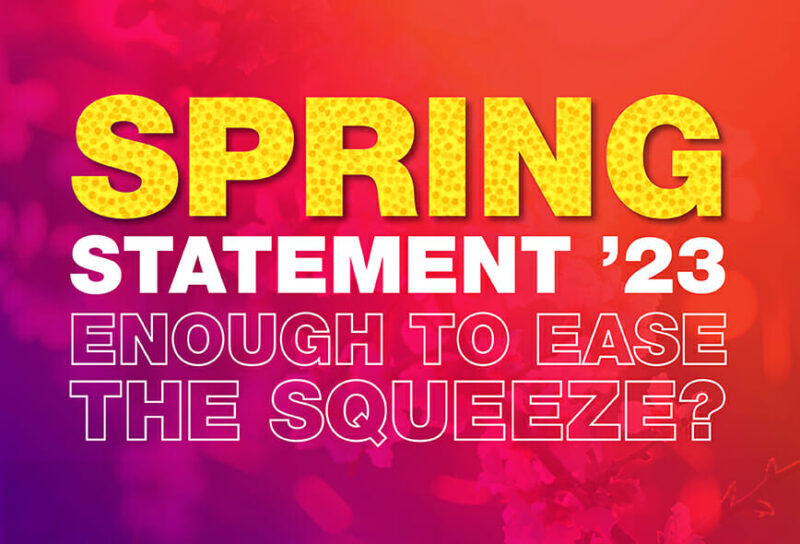With the whole world cast into COVID-19 confusion, it’s refreshing to bring you our top tips on one of life’s eternal certainties: tax year-end.
We’ve put our brains together and laid out the actions you should be considering around Income Tax, Capital Gains Tax, Pensions & Investments and Inheritance Tax below. And as always, if you’ve got any questions, we’d love to chat.
INCOME TAX
- Earning between £12,501 and £50,000? You’ll be taxed at the basic rate of 20% (dividends 7.5%).
- Earning between £50,001 and £150,000? That’s the higher tax band. And you’ll be paying 40% tax (dividends 32.5%).
- Your personal allowance is reduced by £1 for every £2 of income above £100,000. So, if your income exceeds £125,000, there’s no personal allowance. But you might be able to get it back using our top tips below.
- Earning over £150,000? You’ll be taxed at the additional rate of 45% (dividends 38.1%).
OUR TOP TIPS:
- The personal savings allowance grants £1,000 of tax-free savings income to basic rate taxpayers. For higher rate taxpayers, that figure is £500. Additional rate taxpayers don’t receive this allowance, so if you do, be sure to use it.
- The £2,000 dividend tax allowance is available for all taxpayers, and amounts falling within this allowance are taxed at 0%. So, again, make the most of it.
- If you have a spouse or civil partner, you can transfer income producing assets to them to make sure you’re both using all the available allowances. This is also useful if they’re taxed at a lower rate.
- You can reduce your higher tax rate liability by reducing your taxable income. How? By making payments to a pension plan, donating to charities under ‘Gift Aid’, or converting income into non-taxable forms
- Reduce your higher tax rate liability by reducing your taxable income. This can be done by making payments to a pension plan, making donations to charities under ‘Gift Aid’, or converting income into non-taxable forms. And if you’re A) earning between £50,000 and £60,000 and getting child benefit, or B) earning above £100,000 and losing your personal allowance, reducing your taxable income can lead to great savings.
- Make sure you’re claiming capital allowances when you buy qualifying assets for your business. Right now, the Annual Investment Allowance (AIA) is £1m, but act fast, because by 31 December 2020, it will fall to £200,000.
CAPITAL GAINS TAX
- When you sell an asset that’s increased in value, you’re charged Capital Gains Tax on the profit.
- For 2019/20 you can make gains of £12,000 tax-free. But this exemption can’t be carried forward into the next financial year.
OUR TOP TIPS:
- Have you used your annual exemption? If not, think about selling assets before 6 April 2020.
- Make sure you’re utilising your spouse or civil partners’ annual exemption by transferring assets to them before selling them.
- The Entrepreneurs’ Relief available to individuals during their lifetime was cut from £10m to £1m on 11 March 2020. This can mean that Capital Gains Tax is due at 10% instead of 20%, but you need to check that’s the case. If you’ve already exceeded the lifetime allowance of £1m, you won’t be able to claim Entrepreneurs’ Relief.
- If you own a second home, or a holiday home, you can decide which property is treated as your primary residence, and therefore which property is exempt from Capital Gains Tax. However, the exemption of a gain on one residence means the gain on the other becomes chargeable, so plan carefully. You must elect your main residence within 2 years of purchasing the second one.
PENSIONS & INVESTMENTS
- You can pay up to £40,000 a year into a pension scheme. Unused allowances from the last 3 years can be used if you were a member of a qualifying pension scheme.
OUR TOP TIPS:
- Review your allowances. The £40,000 allowance is reduced by £1 for every £2 of an individual’s total income over £150,000. And if your income exceeds £210,000, you have a £10,000 allowance plus any unused allowances from the last 3 years.
- The Lifetime Allowance is the amount of money you can hold in pension schemes without facing penalty tax charges when you take pension benefits. For 2019/20 this figure is £1.055m – so check if your pension pot is at or around this number.
- Take advantage of your £20,000 ISA allowance.
- If you’re aged 18-40 you can open a Lifetime ISA and put in up to £4,000 a year until you’re 50. The government will add a 25% tax-free bonus to these savings, up to a maximum of £1,000 a year. This £4,000 counts towards your £20,000 annual ISA limit.
- Look at investing in schemes or shares such as Enterprise Investment Schemes (EIS), Seed EIS (SEIS) or Venture Capital Trusts (VCTs). While these investments offer upfront income tax relief, they can also carry higher risk, so get in touch with us to discuss your best option.
INHERITANCE TAX
- Inheritance Tax (IHT) is charged at 40% on the part of your estate (property, money and possessions) that’s above the £325,000 nil rate band (NRB).
OUR TOP TIPS:
- Make regular gifts out of your after-tax income. You can give up to £3,000 each tax year, and this amount carries forward for one year if it’s unused. These gifts can be exempt from IHT as soon as they’re made.
- Make a will – dying without one can increase tax and mean that assets aren’t distributed as you wished.
- Review the size of your estate and your will to ensure you benefit from the Residence Nil Rate Band. This is an additional amount up to £150,000 available on top of the individual NRB where the deceased has left a residence to their direct descendants.




















